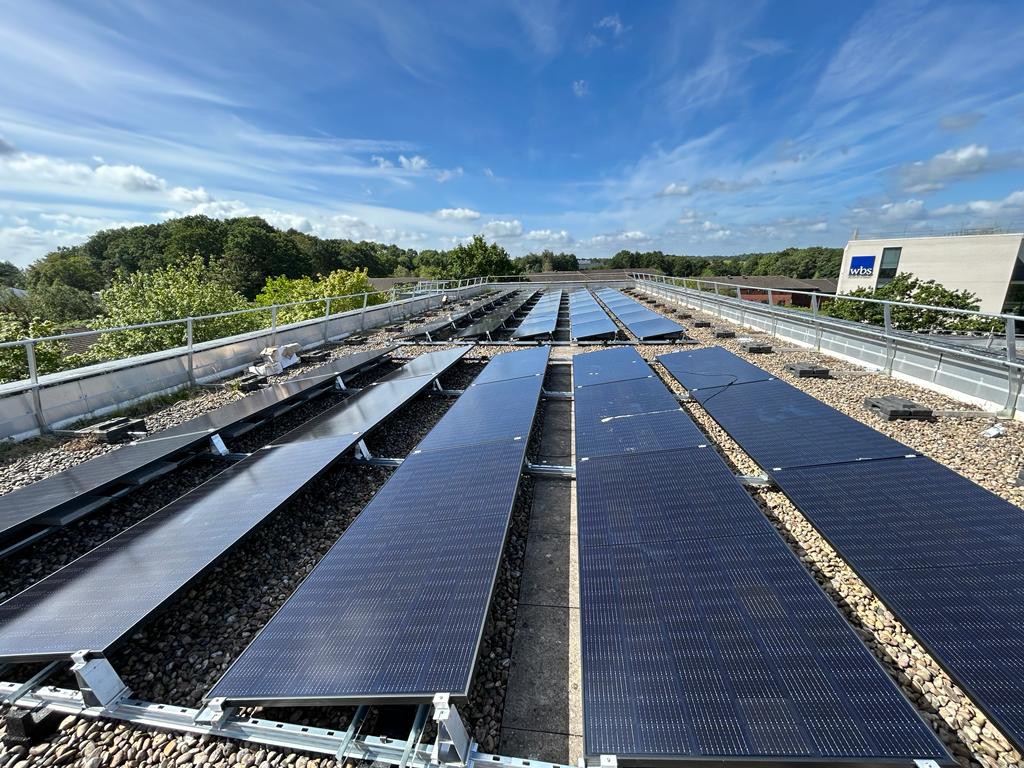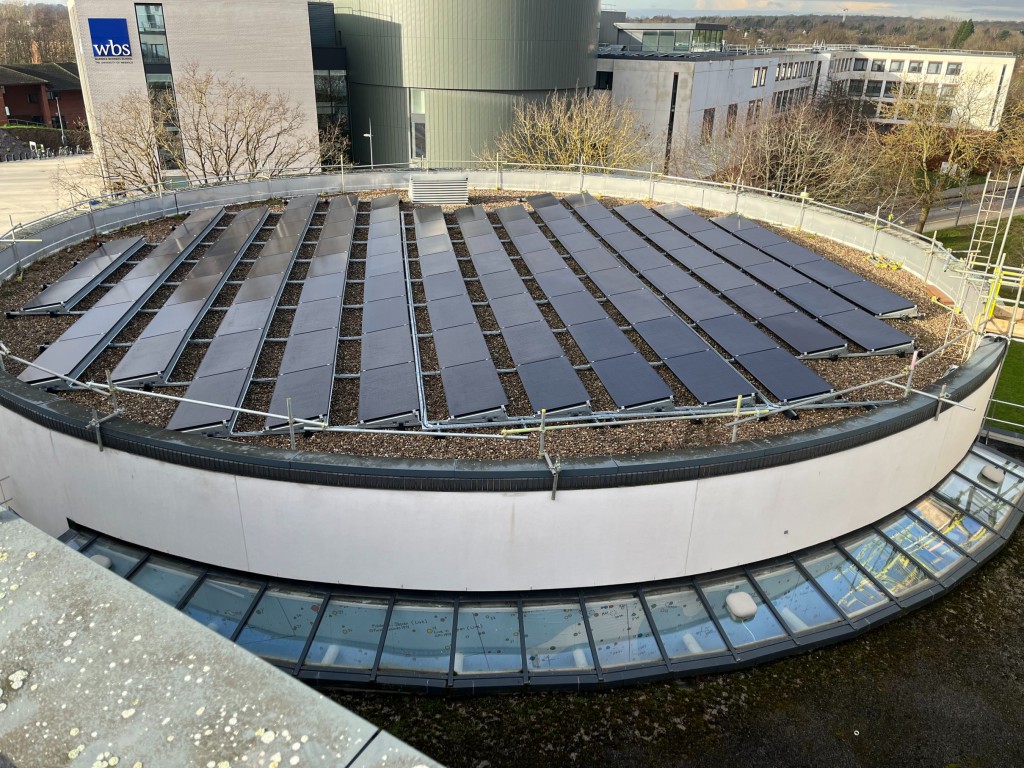Solar side up

The number of commercial and industrial buildings installing photovoltaic systems is growing exponentially. Chris Cowling, Commercial Director at Aztec Solar, explains how to get the specification and installation right for now and the long term.
According to Drax’s ‘Electrical Insights’ report, the rate of new solar panel installations more than tripled between September 2022 and 2023. As a country we installed a total of 2.9GW bringing our total to 18.1GW. And this growth is set to accelerate with the report forecasting 4.6GW of solar installations in 2024.
The demand is particularly strong in public sector, commercial and industrial buildings as organisations seek to meet their carbon reduction commitments, reduce their electrical costs and secure their supply.
Payback periods for solar installations are typically about five to seven years, but depending on your client’s electrical consumption they can be as short as three years. After that, they are saving or even generating revenue by exporting it back to the grid. A good photovoltaic (PV) module will still be producing 90% of its output even after 25 years so the potential lifespan of the system could be longer than you think. It makes the design of the system crucial both in selecting the right products and planning for the long term.
Planning renewable generation over a long period is not simply a case of finding the lowest cost solution. You must specify a system that meets the needs of the organisation now and in the following decades. And you need to consider the practicalities of the installation plus the future operations and maintenance to minimise the lifecycle cost over its lifespan.
It all starts with the design and a clear idea of your customer’s electrical consumption and what it is likely to be in the next few years. Are they, for example, planning to charge more electric vehicles in the future – whether that’s cars, commercial delivery vehicles or forklifts in a warehouse?
Many commercial organisations will use most of their electrical power in the day, and can often use all the power generated by a PV system, so they may or may not need energy storage using batteries. The advantage of having batteries is that you can use the generated power when the sun is not shining and also receive and store energy from the grid at low peak times for additional use when you need it. Each installation is different and it’s a matter of judgement.
Before you start your design, you will need to conduct a thorough site audit to assess the roof structure and its load bearing capacity and the best areas to install the PV modules. This is to maximise their output, avoid skylights and other services and consider safe passage for future operations and maintenance and in case of an emergency.
Planning for repair and maintenance and thinking ahead
If you outsource the design and installation then it’s a good idea to employ a company which also provides operations and maintenance support as they will have a clear understanding of what to consider for the long term.
For product specification you should only consider tier 1 products. These are audited for performance and also for their provenance. Organisations are typically installing PV systems as part of their sustainability drive so the last thing they want is their PV modules produced using slave labour.
PV modules generally have a warranty for 25 years and will in many cases last even longer, whereas inverters could need replacing after 10 years. You need to plan for future access for the maintenance of both and their potential replacement.
Many commercial installations will have several thousand PV modules so you need to think about remote monitoring of the system so that a maintenance team can clearly identify and find where a fault is. They will need access to the system so think about the positioning of distribution boards, inverters and the PV panels. At a basic level, PV panels will need cleaning regularly, but if they need replacing or maintenance then remember that they will be generating DC voltage electricity, so you need to mitigate the future risk to personnel.

Safety first
PV modules typically have an output voltage of 30-60V. Connecting several of these modules serially in a string creates a high voltage of up to 1000Vdc in a commercial installation, which can be dangerous to installers and for future maintenance.
Traditional string inverters cannot reduce this DC voltage even if they are turned off.
This has two implications. Personnel will need experience in working on live equipment, but more importantly you need to select an inverter that will reduce the voltage to a safe level for maintenance or in an emergency; if for example fire fighters need to access the roof.
Fortunately, inverter technology has caught up with this safety requirement. Systems like Solar Edge have power optimisers, inverters and individual monitoring on each module. This allows for the automatic shutdown of PV arrays and lowers and maintains the voltage in all DC conductors below 50V and to 1V per optimiser for either maintenance or in an emergency.
A further safety requirement for inverters is that they must detect and terminate an electrical arc by shutting down. Such arcs could be due to connectors or cables being damaged or not properly connected.
This technology also keeps output levels high. In a traditional arrangement if one module is not working properly, then other modules in that string will drop down to a minimum level. With the inverter technology described above, if one module is not at full capacity for whatever reason it does not affect the other panels’ output.
Installation
Every installation is different and each poses its own challenges for the specification, installation and commissioning. Factors to consider include when you can get access PV modules onto the roof, how long will the power be shut off for connection and commissioning, and the health and safety of the building occupants and those installing the system.
For many commercial buildings, such as hospitals for example, there may only be a very small timeframe where you can connect, commission and test the system before they need the building’s power back on. The specification, design, commissioning and ongoing maintenance of a PV system is vital if an organisation is going to maximise the rewards from renewable self-generation over its long lifespan. It pays to design such systems with future maintenance in mind and to consider the system’s future requirements for replacing equipment and the needs of personnel who need to maintain it.
Get the specification right and the building landlords and occupants will reap the rewards for decades. And perhaps more importantly, you will be making a significant contribution to the climate and our future energy security.







